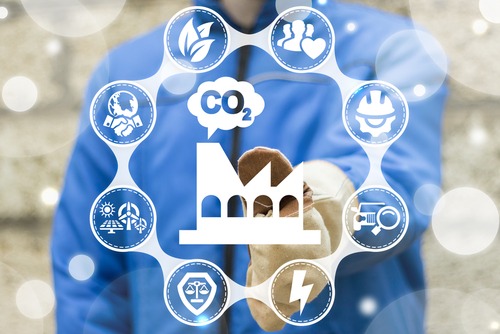DOE offers $3 million to encourage carbon management, storage tech among public power associations

The United States Department of Energy’s (DOE) Office of Fossil Energy and Carbon Management (FECM) put up to $3 million up for grabs last week by four national public power associations, both to increase engagement in carbon management and promote energy storage.
The funds are being made available through cooperative agreements, which will support the development of new technology, tools, educational resources and training to improve the situation for communities most impacted by historical fossil fuel use and could benefit from transition to a cleaner energy economy. In particular, the federal government seeks to increase regional and state-level engagement in the larger process.
As such, the groups chosen for these awards include the National Association of Regulatory Utility Commissioners (NARUC), the National Association of State Energy Officials (NASEO), the National Rural Electric Cooperative Association (NRECA) and the American Public Power Association (APPA). Each will use their funds for slightly different purposes, although all will have their contracts managed by the National Energy Technology Laboratory (NETL).
For NARUC, up to $200,000 will be provided per year for five years, as part of the DOE-NARUC Coal Modernization and Carbon Management Partnership. That partnership will tap NARUC’s experts and state partnerships to improve learning and discussion among members on such topics as carbon capture, means to use existing coal and fossil fuel production and transportation infrastructure to support energy security, economic growth and climate mitigation, as well as analyzing the role of coal and other fossil resources in the climate crisis.
The same amount will be available to NASEO, through the State and Local Innovation and Analysis in Support of Long-Term Energy Planning and Policy. Its experts will likewise focus on the state level, pushing research, analysis and development of education information on climate-related matters, the transition to clean energy and related technological advances. It will seek to improve peer-to-peer learning among state energy officials.
Meanwhile, NRECA could gain up to $100,000 per year for five years, along with an additional $25,000 per year for five years in non-DOE funding, for work on Outreach for Advanced Storage Integration and Support (OASIS). Through this program, NRECA will provide educational resources, training and workshops to electric co-ops to help them better integrate new energy storage technologies among their generation systems and to pursue storage integration pilot projects.
A similar amount of funding will be available to APPA for work on Energy Storage Accessibility for Public Power Utilities, a program to unite municipal utilities for discussion of opportunities and barriers alike on the road to integrating energy storage technologies at power plants. They will also work with DOE and others to remove those roadblocks, while creating educational resources, publications and technical tools for public power utilities to advance energy storage projects.
